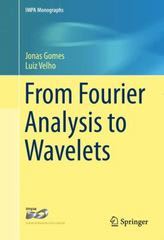Question
The percentage of seeds that germinate (under ideal conditions) is known as the germination rate of a seed. For instance, if 100 corn seeds are
The percentage of seeds that germinate (under ideal conditions) is known as the germination rate of a seed. For instance, if 100 corn seeds are planted and 86 germinate, then the germination rate for the corn is 86%. A seed distribution company claims that its corn seeds have a germination rate of at least 67%. However, many farmers have reported much lower germination rates. Therefore, many farmers believe that the germination rate advertised by the seed company is likely lower than advertised. To determine if the true germination rate is lower than the rate advertised by the company, an agronomist planted 520 corn seeds under ideal lab conditions and observed 310 of the seeds germinated. Use the p-value method to dertermine if the sample data support the farmers' belief that the true germination rate of this company's corn seeds is less than 67%. Let =0.025 State the null and alternative hypothesis for this test. H0:? = > < p = p p p p > p < H1:? = > < p = p p p p > p < Determine if this test is left-tailed, right-tailed, or two-tailed.
- two-tailed
- right-tailed
- left-tailed
Should the standard normal (z) distribution or Student's (t) distribution be used for this test?
- The standard normal (z) distribution should be used
- The Student's t distribution should be used
Determine the test statistic for the hypothesis test. Round the solution to two decimal places. Determine the p-value for the hypothesis test. Round the solution to four decimal places. Determine the appropriate conclusion for this hypothesis test.
- The sample data do not provide sufficient evidence to reject farmers' belief that the germination rate of the corn seed is less than 67% and thus we conclude that the true germination rate is likely less than 67%.
- The sample data provide sufficient evidence to reject the seed company's claim that the germination rate of their corn seed is 67% (null hypothesis) and thus we conclude that the true germination rate is likely less than 67%.
- The sample data do not provide sufficient evidence to reject the seed company's claim that the germination rate of their corn seed is 67% (null hypothesis) and thus we conclude that the true germination rate is likely 67%.
- The sample data provide sufficient evidence to reject farmers' belief that the germination rate of the corn seed is less than 67% and thus we conclude that the true germination rate is likely 67%.
Step by Step Solution
There are 3 Steps involved in it
Step: 1

Get Instant Access to Expert-Tailored Solutions
See step-by-step solutions with expert insights and AI powered tools for academic success
Step: 2

Step: 3

Ace Your Homework with AI
Get the answers you need in no time with our AI-driven, step-by-step assistance
Get Started


